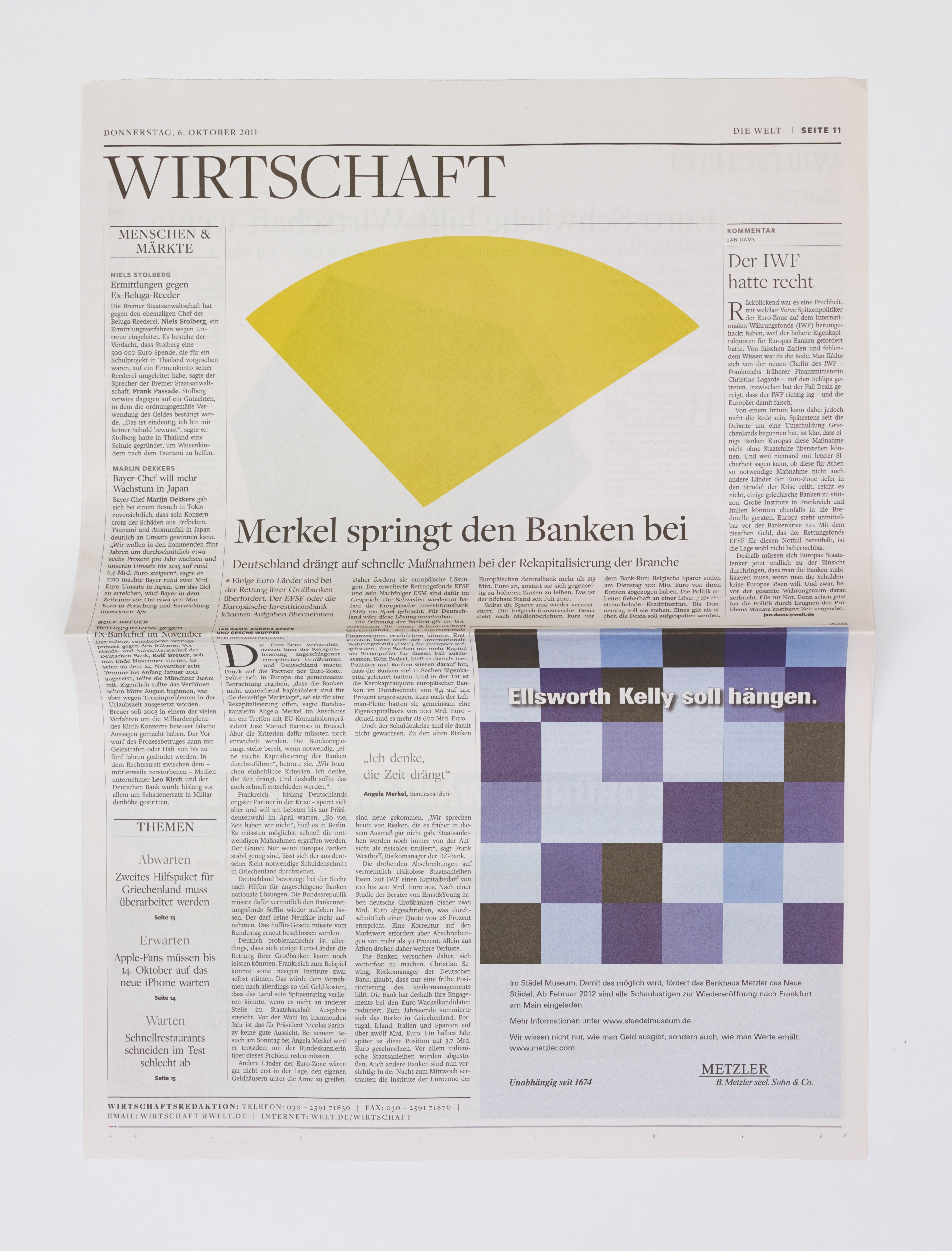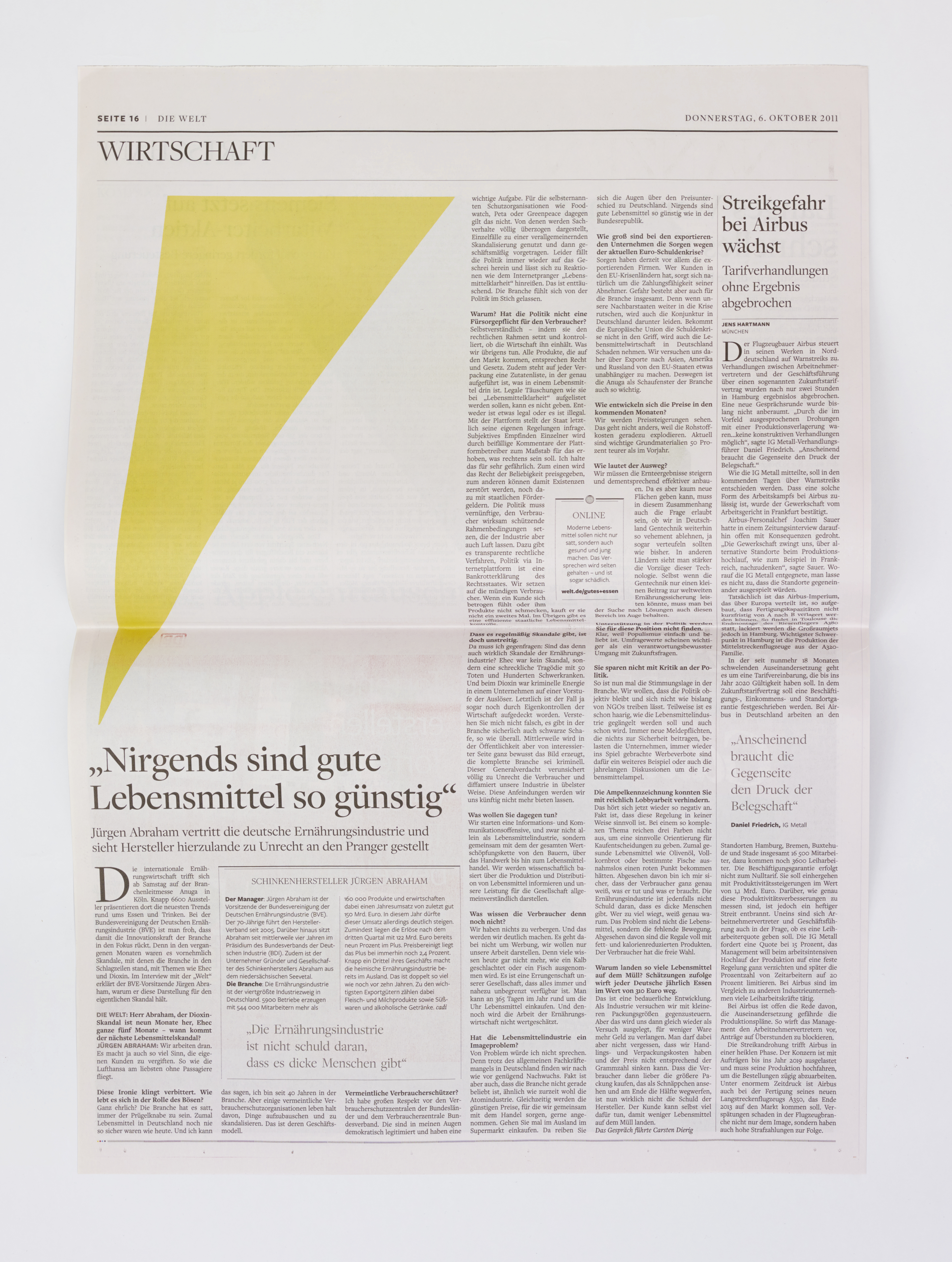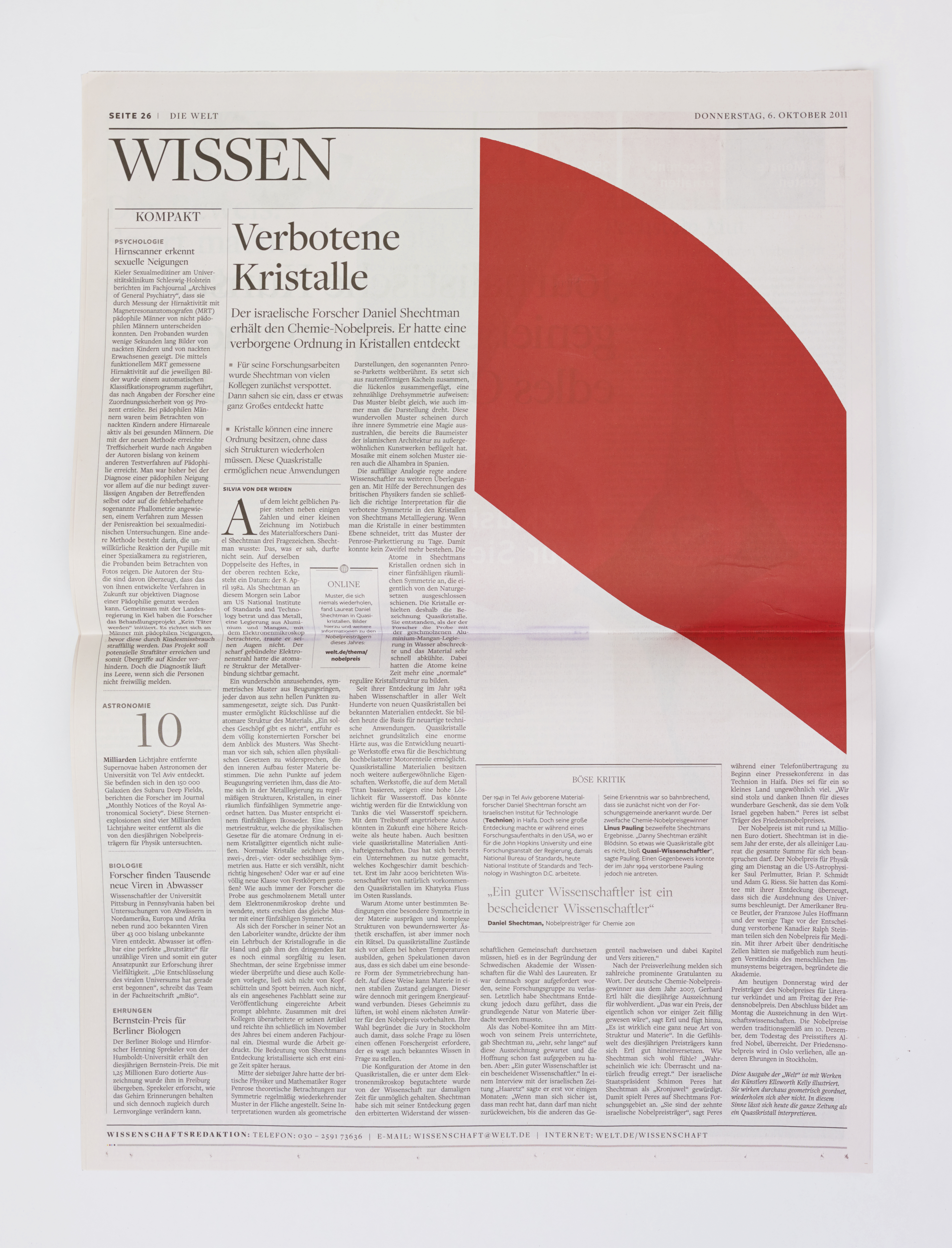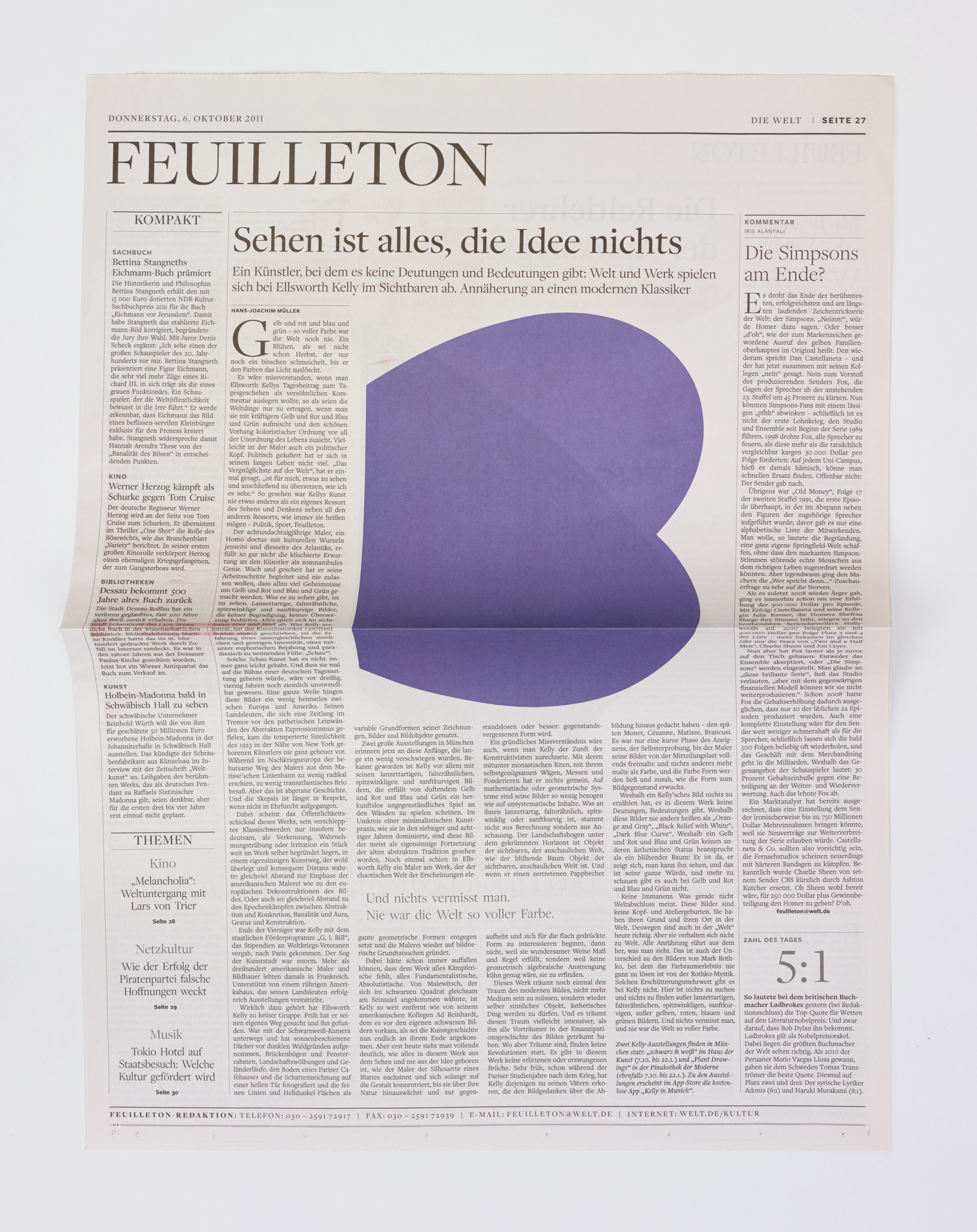Ellsworth Kelly, Die Welt, 2011, ink on newsprint, 3 sections, each 23 x 15 ¾ inches (58.4 x 40 cm) unfolded. © Ellsworth Kelly & Die Welt / Photos: Andy Romer Photography
Ellsworth Kelly is famous for his work in hard-edge abstraction: primarily large shapes, often but not exclusively sculptural, sporting one uniform color surface—or sometimes two colors on adjacent shapes, which almost touch but never do. Hard-edge abstraction, in Kelly’s vernacular, is surprisingly sensual. The tension between a single color field and a wall, or between two sculptural shapes, suggests proximity with a prohibition against actual touching.
As part of a series organized by Die Welt, the leading conservative German newspaper, Kelly designed an edition of the paper to feature his signature abstract shapes where readily digestible photojournalistic images would usually be found. Images found in newspapers are customarily in conversation with text, often glimpsed as supplements rather than examined on their own. Photojournalism, however, is uniquely situated as the practice of capturing a precise moment and telling a story without words—an important component of reportage that, in daily periodicals such as Die Welt, might otherwise go unnoticed. Kelly’s intervention challenges the relationship between image and text in a specific context, while also raising questions about the ability of abstract art to speak directly to experience.
Unlike other queer artists of his generation, such as Robert Rauschenberg and Robert Indiana, who routinely incorporate language into their work, Kelly leaves his surfaces devoid of legible words or recognizable images. This marked absence gestures toward Kelly’s acute awareness of the risks taken in suggesting sexuality in his work, and this awareness serves as one explanation for his according decision to avoid suggestion wholesale. But in Die Welt, Kelly quite consciously brings his images into play with text, suggesting that his work need not contain words or pictures in order to speak volumes about society.
In placing abstract forms where we expect to find illustrative images, Kelly asks the viewer to consider how form, line, and color might resonate with people, and how it might formulate the information we use each day to understand one another and to make ourselves understood.
Ellsworth Kelly Biography






